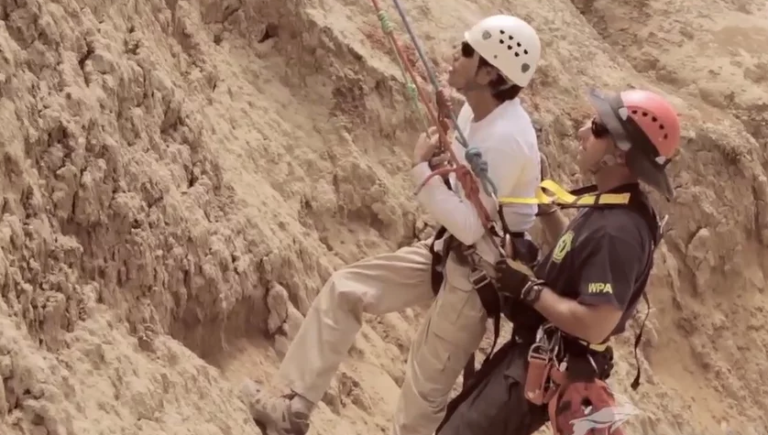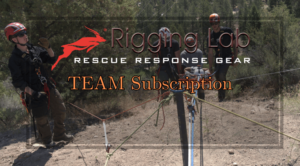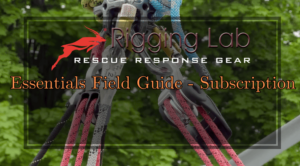Core Elements of Tactical Wilderness Rescue
Core elements of tactical wilderness rescue is operating in remote and unpredictable environments. To wit, tactical wilderness rescue teams must be prepared to execute efficient, rapid-response extractions with minimal gear. Unlike urban or industrial rescues, wilderness scenarios often demand lightweight, adaptable techniques that maximize safety while minimizing complexity. Mastering the core elements of wilderness rescue ensures a seamless response when time and terrain are against you.
Knotcraft and Rope Management
In a wilderness rescue, the ability to tie strong, reliable knots quickly can mean the difference between success and failure. Rescuers must prioritize knots that are both secure and easy to untie under load. Some of the most effective knots for rapid deployment include:
- Figure-eight on a bight – Quick and strong for anchoring and attachment
- Clove hitch – Ideal for securing a rope to a structure or anchor quickly
- Münter hitch – Provides friction for controlled lowering without specialized gear
- Tensionless hitch – Utilizes a tree or post to create a high-strength anchor without requiring knots that weaken rope integrity
- Purcell prusiks – Adjustable loops for personal positioning and rescue load handling
Additionally, rope management is critical in the wilderness. A tangled rope can delay rescue efforts, which is why working directly off a coil—rather than relying on rope bags—allows for faster deployment. Coiling methods such as the butterfly coil or mountaineering coil keep ropes organized and ready for action.
Anchor Selection and Rigging
The wilderness environment rarely offers convenient, pre-established anchor points. Rescuers must quickly identify and utilize natural features such as:
- Trees – Strong and widely available, trees provide excellent anchors when used with tensionless wraps or slings
- Rock formations – Boulders and outcroppings offer solid anchors when wrapped properly with webbing or cordage
- Logs and fallen timber – Can be incorporated into anchor systems when stabilized correctly
Rather than relying on excessive hardware, minimalist rescuers must be proficient in improvised anchoring techniques, including rock horns, natural chockstones, deadman anchors in snow or sand, and rope-wrapped trees. A well-placed anchor can provide the stability needed for rappelling, lowering systems, and load distribution in complex terrain.
Litter Handling and Patient Movement
Rescuing an injured person in the wilderness requires strategic litter handling. Teams must transport patients safely across terrain that ranges from flat open ground to steep, uneven slopes. The key considerations include:
- Flat carries – A six-person or four-person carry technique allows for effective movement over short distances
- Low-angle evacuations – Using a single-rope or assisted carry method to control movement on slopes up to 30 degrees
- Steep-angle evacuations – Where controlled lowering or hauling techniques are necessary to maneuver down inclines of 30–60 degrees
Lightweight break-apart litters, such as titanium-frame models, enhance mobility and reduce fatigue on long carry-outs. When available, caterpillar pass techniques—where rescuers hand off the litter in short, controlled movements—prevent excessive strain on individual team members.
Single and Dual Rope Decision-Making
Selecting between a single-rope or dual-rope system is a critical decision in wilderness rescue. Each approach has its advantages:
-
- Faster deployment
- Requires less equipment
- Suitable for non-critical lowers or stable terrain
-
- Provides redundancy for added safety
- Recommended for highly exposed areas or unpredictable terrain
- Often required when lowering a loaded litter with multiple rescuers attached
Understanding the balance between speed and safety is key. In many minimalist scenarios, a single-rope system is preferred unless the terrain or patient condition demands additional security.
Pulley Systems for Efficiency
Mechanical advantage is a force multiplier in wilderness rescue. Lightweight pulley systems, such as the AZTEK kit, provide:
- Quick setup for raising and lowering loads
- Compact, multi-use capability for tensioning and anchoring
- The ability to shift between simple (2:1), compound (3:1, 4:1), and complex systems
Using progress capture devices in combination with a basic pulley system allows rescuers to efficiently raise a casualty with minimal manpower. In minimalist rescue, every piece of gear should serve multiple functions.
Belay and Fall Protection Considerations
One of the most crucial decisions in wilderness rescue is when to use a belay line for redundancy—and when it is unnecessary. While redundancy is a key safety principle, adding a belay system can also:
- Increase complexity and slow down a rescue
- Require additional manpower for rope management
- Introduce unnecessary friction in otherwise stable operations
To determine whether a belay system is required, teams must assess:
- Exposure risk: If a fall would result in severe injury, a belay is necessary.
- System reliability: If using a high-friction lowering device or a releasable munter hitch, a belay may be unnecessary.
- Time constraints: If a casualty requires rapid evacuation, a single secure rope system may be the best option.
When belays are required, static rope belay systems or traveling brake systems can be implemented efficiently without excessive rigging.
Conclusion: Tactical Wilderness Rescue
The essence of tactical wilderness rescue lies in its adaptability and efficiency. Teams that master the core elements—**knotcraft, anchor improvisation, patient movement, system selection, mechanical advantage, and fall protection—**gain the confidence and skill to operate effectively in demanding environments.
By reducing reliance on heavy equipment and focusing on skill-based rigging, rescuers can execute faster, safer, and more efficient operations. Whether navigating steep terrain or executing rapid evacuations, a minimalist approach ensures that when every second counts, rescuers are ready to respond with precision and confidence.
Peace on your Days
Lance










